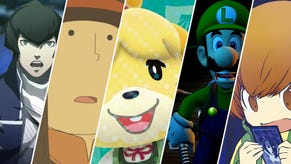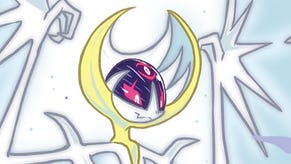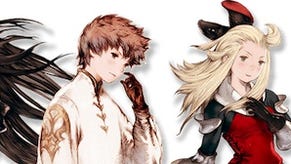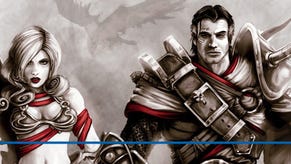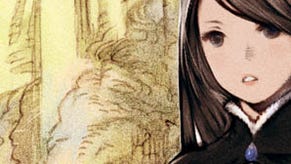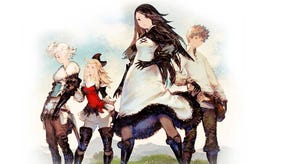JPgamer: About the Bravo Bikini...
The rather good upcoming JRPG for 3DS Bravely Default has had a few changes for its Western release. But were Nintendo and Square Enix right to make those changes?
This article first appeared on USgamer, a partner publication of VG247. Some content, such as this article, has been migrated to VG247 for posterity after USgamer's closure - but it has not been edited or further vetted by the VG247 team.
If you follow JRPGs, doubtless you'll already be familiar with the fact that the Western release of Bravely Default has had some adjustments from its Japanese counterpart.
For those unfamiliar, the main change is seen with a few character costumes that have been tweaked to be somewhat less revealing, but more subtle changes are seen in the in-game dialogue and lore: the main characters have all had their ages increased by three years, for example -- primarily, it seems, to ensure that none of them are underage by Western standards -- and some of the more suggestive, innuendo-laden exchanges between characters have been toned down a little, though not necessarily removed.
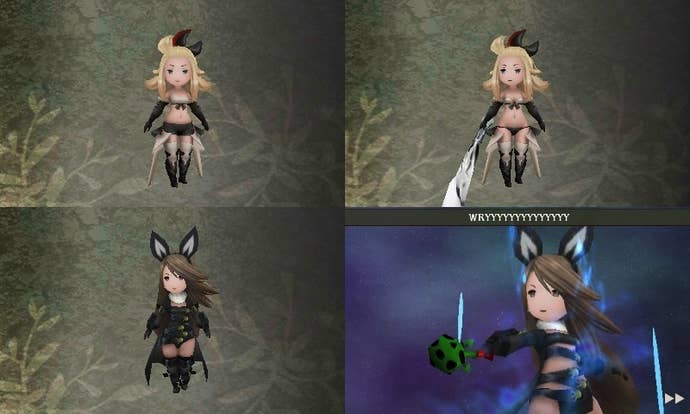
On the left, you'll see Edea's "Bravo Bikini" outfit has been modified to hide her cleavage at the top, and the bikini bottoms that she needs to pull up a bit have been replaced by a pair of hotpants. In the lower half of the image, you'll see Agnés' Lulu-style "outfit made of belts" has had the bits of bare skin visible between said belts filled in to make it look like a solid one-piece suit instead.
For the curious, in story terms, the first time we come across the "Bravo Bikini" is during a sequence where party member Agnés is trying to attract the attention of one of her friends who has gone into hiding and, due to complicated circumstances that I won't spoil for you right now, the only means of doing so is to enter a brainwashed matriarchal town's beauty competition -- but she believes she has nothing to wear that will make her stand out enough for her friend to notice her.
Earlier in the game, the party encounters a wise old man of the woods who is a dab hand with making dresses, but who is also something of, to put it delicately, a colossal pervert. Upon the party seeking his advice, said sage is quick to recommend his "ultimate creation" to Agnés, and in an off-screen sequence where Agnés tries it on, it's made out to be an incredibly skimpy garment that leaves nothing to the imagination. Fellow party member Edea, whom it later turns out seems to have taken something of a liking to the garment, eventually ends up using it and herself as "bait" to ensnare a local dandy who has been manipulating and kidnapping women for his own evil ends -- and that's the first time we actually see it on-screen as depicted above.
Ultimately, the actual way the costume is depicted is not especially relevant to the story -- it's still skimpy enough to warrant Agnés' hilariously flustered, shocked reaction when she first tries it on -- but it does bring up an interesting discussion that occasionally crops up when Japanese games are being localized for a Western audience.

This isn't the first time a 3DS game has been subject to small content changes like this, and it probably won't be the last. Perhaps the most notorious example in recent memory was Fire Emblem: Awakening, in which an event scene from the "Summer Scramble" DLC featuring the character Tharja was adjusted from the original Japanese version, seen on the left in the image above, to the version on the right. Some have pointed out that the "censored" version actually looks somewhat more obscene due to the fact that 1) you can't see she's wearing anything down below any more and 2) the "curtain" covering her backside could also be seen as the cloak of one of the other characters peeping in on her getting changed. That is, of course, a matter of opinion, but either way, it seems like something of a strange decision since the content is still there and it's obvious what it was, so why bother censoring it in the first place? It's like people who "bleep" their profanities with a single asterisk. F*ck that.
There are a few things that make me feel a little uncomfortable about the handling of this situation, though. Bravely Default clearly doesn't "need" to be a sexy game -- and personally, I certainly have no desire to get my ya-yas from Akihiko Yoshida's distinctive chibi characters who, as always, have no noses, barely-visible feet and perpetually stoned facial expressions -- but for whatever reason its creators decided that some of the outfits should be a little on the risqué side for both the male and female characters. But regardless of what we think of the outfits in question, shouldn't we respect the original character designs a little more rather than assuming Western gamers won't be able to cope with the sight of a bit of cleavage? After all, it's not as if Western games have any shortage of cleavage-flaunting female characters -- though that's arguably another matter equally worthy of separate discussion. And anyway, shouldn't this sort of thing be the choice of whoever is actually playing the game rather than a company acting as our omnipotent moral guardian without asking what the players think?
The other reason why this strikes me as a little strange is because of what hasn't been removed from Bravely Default's localization. While some of the innuendo has reportedly been toned down somewhat -- particularly when it comes to the aforementioned Sage of Yulyana -- there's still plenty of content in there which I wouldn't consider particularly appropriate for younger audiences. Around a similar time to the Bravo Bikini scene, for example, there's a sidequest in which you discover one of the game's villains capturing fairies, pulling their wings off and killing them because she finds it fun and likes to hear them scream. Not long afterwards, two pre-pubescent girls the party has been attempting to track down succumb to brainwashing, come to blows and end up killing each other while the party is dealing with the aforementioned fairy-abusing villainess, leading to a somewhat somber walk back to town afterwards. And this is far from an isolated incident; despite having the somewhat cheerful aesthetic of a PS1-era Final Fantasy game, Bravely Default very much has a dark side, and when that comes out to play, it doesn't pull any punches.
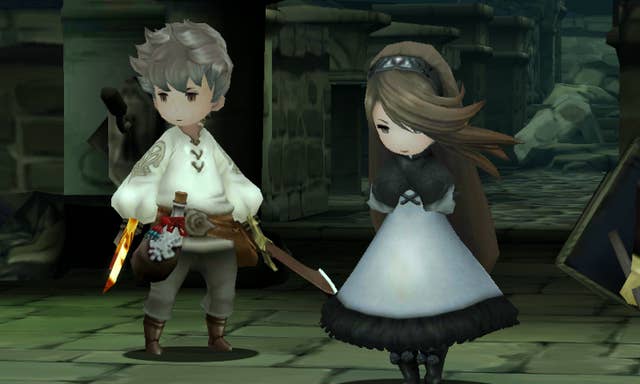
In other words, the adjustments made to the characters' costumes -- I hesitate to call it "censorship" because it's actually more just "localization" if we're being rational about this -- send somewhat mixed messages when taken alongside the content seen elsewhere in the game. As ever, it seems to boil down somewhat to the differing and inconsistent reactions we have towards both violent and sexual content here in the West. While the community as a whole seems collectively to have accepted that the stories told in games are often violent in nature -- conflict makes for a reliable narrative impetus, after all -- there are still a lot of people out there who are uncomfortable with content that is even a little bit sexual, particularly when, as in many Japanese games, the characters involved are (or at least have the appearance of being) young. At the same time, there's also a touch of the "games are for kids" mentality still at work, too -- particularly in games where, like Bravely Default, the characters' proportions make them look rather childish or cartoonish.
Ultimately, the changes made to Bravely Default don't affect the quality of the game -- if you're a fan of old-school Final Fantasy, you're probably going to want to pick this one up when it releases in February, regardless of how much skin the characters show -- but it's still worth taking note of and questioning the decisions made in the name of supposed decency. For me, it's not about whether or not I get to see characters in revealing costumes -- I can take or leave that -- it's about feeling trusted to make my own decisions about what content I choose to (or, for that matter, choose not to) engage with. And when something like this happens, it's hard not to feel like the companies involved are taking a bit of a "we know best, hush now" attitude.
On the other hand, of course, I'd rather we got a Western release of games like Bravely Default in a slightly sanitized form than not at all.
What's your take -- both on Bravely Default's specific changes, and more generally on the concept of content being adjusted in this way for Western release?

